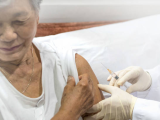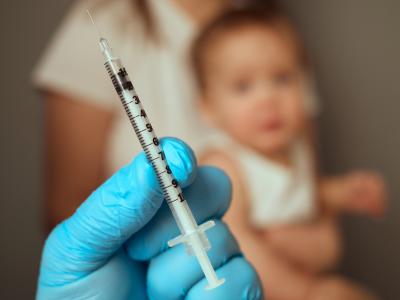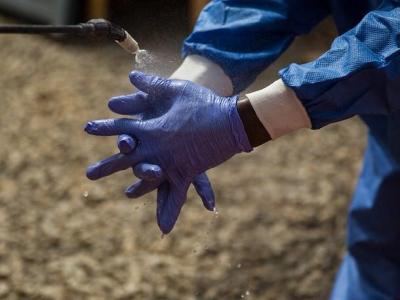Using data from hospitals across Canada, researchers have produced a preliminary estimate that this year's influenza vaccine reduced Canadians' risk of flu-related hospitalization by about 59%, according to a report in yesterday's Eurosurveillance.
The authors also found that about two thirds of severe flu illnesses in adults involved people younger than 65, supporting previous indications that this season has been hard on younger adults. The 2009 H1N1 (pH1N1) virus has been overwhelmingly dominant in Canada and the United States this year, the first time this has happened since the 2009 pandemic.
"Our interim VE [vaccine effectiveness] estimates confirm moderate but clinically and statistically significant protection against serious influenza outcomes of clinical and public health importance," the report says.
Data from 40 hospitals
Data for the study come from hospitals in the Public Health Agency of Canada/Canadian Institutes of Health Research (PCIRN) Serious Outcomes Surveillance (SOS) Network. The network was set up in 2009 to prospectively monitor seasonal flu VE in preventing flu-related hospitalizations in adults. It consists of 40 hospitals in 10 provinces and 3 territories.
Patients at least 16 years old were included in the study if they were hospitalized between Nov 15, 2013, and Feb 8, 2014, with pneumonia, acute exacerbation of chronic obstructive pulmonary disease or asthma, unexplained sepsis, any other respiratory infection or diagnosis, or any respiratory or flu-like symptom. In addition, on one day each week, patients with fever and a cardiac diagnosis or stroke were included.
The investigators used a test-negative case-control design to assess flu VE. Patients' nasopharyngeal swabs were tested for flu using polymerase chain reaction or viral culture, and they were asked about their flu vaccination status.
The team identified 654 patients with confirmed flu infections and 1,190 who tested negative. About 35% (34.7%) of the flu case-patients and 61.6% of the test-negative controls reported having received the seasonal flu vaccine. Underlying conditions that increased the risk of flu complications were reported in 88.6% of the cases and 94.9% of the controls. The case-patients had a mean age of 58.5 years; the controls, 67.9 years.
Little VE difference by age-group
After adjusting for age and underlying conditions, the authors calculated that the overall interim VE was 58.5% (90% confidence interval [CI], 43.9%-69.3%). The VE for adults 65 years and older was barely lower at 58.1% (90% CI, 35.4%-72.8%), and for younger adults it was slightly higher at 60.3% (90% CI, 39.4%-74.0).
Among the 654 case-patients, 20.6% of cases were severe, meaning they required eitheradmission to the intensive care unit (ICU) or mechanical ventilation or were fatal. The mean age of the severely sick patients was 58.6 years (range, 22-98), and 68.1% of them were younger than 65.
Just over a third (33.9%) of the severely ill flu patients (39.0% of those with comorbidities and 5.3% of those without comorbidities) reported they had received this year's flu vaccine. The overall mortality among the cases was 4.9% as of Feb 8, and 18 of the 32 deaths were in patients younger than 65.
Changes in pH1N1 epidemiology
In other observations, the researchers said their findings suggest some possible changes in the epidemiology of severe pH1N1 infections since the 2009 pandemic. The proportion of case-patients who needed ICU admission in their study was 19% as compared with 29% during the pandemic, which suggests a shift to "less severe disease more typical of seasonal influenza outbreaks." Also, the median age of the hospital patients and the percentage with comorbidities were both higher than in 2009.
The authors comment that their VE estimate for preventing flu-related hospitalization is similar to the recent interim US estimate of 61%. The US study assessed VE in outpatients with flu-like illness rather than hospital patients.
The new Canadian estimate is somewhat lower than an earlier Canadian estimate of 74% VE in preventing pH1N1, which was based on testing of outpatients, the authors add.
"This is not surprising given that the population captured by the outpatient sentinel surveillance network is dominated by healthy working-age adults with comparatively few underlying medical comorbidities," while this study involved hospitalized patients who were older (median ages 65 vs 37 years) and much more likely to have underlying medical conditions (92% vs 22%), they write.
Noting some limitations of the study, the report says data on numerous variables were collected with the aim of adjusting for potential confounders, but these data were not available for the interim analysis. As a result, the end-of-season, fully adjusted results may be different.
And referring to the low vaccination coverage in patients who had risk factors for severe flu, the authors comment, "Our findings highlight that important public health benefits of influenza vaccination are lost to poor immunization coverage in some at-risk populations."
McNeil SA, Shinde V, Andrew M, et al. Interim estimates of 2013/14 influenza clinical severity and vaccine effectiveness in the prevention of laboratory-confirmed influenza-related hospitalisation, Canada, February 2014. Eurosurveillance 2014 Mar 6;19(9) [Full text]
See also:
Feb 20 CIDRAP News story on interim estimate of US flu VE
Feb 6 CIDRAP News story on earlier Canadian VE study
Feb 14 CIDRAP News story on flu VE estimate in Spain



















